Repeating History: What Sampras-Rafter Can Teach Us About Nadal-Soderling
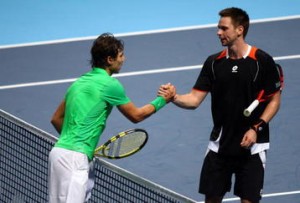
Could Rafael Nadal and Robin Soderling develop the next great rivalry in tennis?
In 1997 Patrick Rafter won his first major at the US Open, thanks to his agile movement, big-kicking serve and unparalleled net coverage. Though this put him exactly nine majors behind Pete Sampras at that point in their careers, it was easy to begin wondering how the two would match up in future encounters.
Still, the two weren’t truly rivals yet; Sampras was 5-1 against the Australian at that point and would add three more lopsided victories over Rafter to his tally that fall. Plus, with the bulk of his accomplishments and the fact that he had a commanding lead in the race for No. 1, few could seriously claim that the two were players of equal stature.
To become a rival to Sampras, Rafter would have to beat the American, and take something he wanted.
That would come in 1998, when the Australian rallied from down a set to top Sampras at the Cincinnati Masters tourney. Sampras had already won Wimbledon that year, and Rafter’s successes for 1998 were just beginning; still, Sampras hungered for the points that event would bring him. He was pursuing the year-end ranking for the sixth consecutive year – a record – and Marcelo Rios was hot on his heels.
By beating Sampras, Rafter earned the American’s ire, and the fact that the last point ended on a call that Sampras disputed only angered Sampras further. But that loss was nothing compared to what was coming in the months ahead: In the US Open Sampras sought to tie the Grand Slam record and Rafter to defend his maiden major. In their tightly contested duel, Sampras called for the trainer to treat his leg late in the third set, by the fifth, with him visibly slowing, Rafter dispatched him by breaking his serve a second time in the final set.
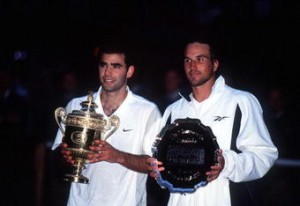
It took time, but Pete Sampras and Pat Rafter eventually developed a hard-fought rivalry.
Rafter won his next match and with it forever shook off the “one-slam wonder” label. But just before he clinched his follow-up major, Sampras infamously responded that the difference between him and the Australian was “ten Grand Slams.”
Sampras, pointed to his leg injury as his reason for falling short in New York and the call he didn’t like in Cincinnati. Later he said that the sight of Rafter holding those US Open trophies “pisses me off.” Rafter responded by calling Sampras a “crybaby” and saying that it would be better for tennis if someone besides the American were No. 1.
For Sampras, generally nothing if not professional, and Rafter, a regular winner of sportsmanship awards, these words are stunning in retrospect. However, they underscore a simple fact: professional tennis players may share the camaraderie that comes with life on the road and on the courts, but in this most solitary of sports their every win takes something away from someone else.
Specifically, when one player beats another he takes money and recognition from him. In the long run, those losses may affect how the player will be viewed when his playing days are over.
When viewed through that perspective, the player who never backbites should perhaps be seen as the exception, not the norm.
Nadal vs. Soderling
In today’s game, Rafael Nadal and Robin Soderling cannot be considered rivals if one is comparing their achievements. Nadal has won six majors and been a finalist twice, whereas his massive Swedish opponent has reached only one final. Soderling is nearly two years older than Nadal, but the Spaniard has won nine times as many ATP tour events and about five times as much career prize money.
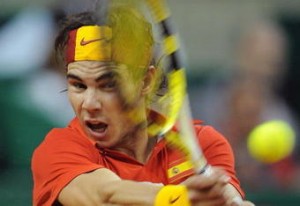
Rafael Nadal has established himself as one of the great players of this era.
Even when Soderling was mocking Nadal’s on-court behavior in the 2007 Wimbledon he still wasn’t a rival to the young Spaniard because he would lose that day, and in fact had lost every encounter between them until this past summer. Then, on a late spring day in Paris, Soderling took away something Nadal wanted: Roland Garros.
Well, more specifically, he took Nadal’s spot in the quarterfinals of the RG before losing in the finals to Roger Federer, but was an upset that rocked the Spaniard. It was his first ever defeat at the RG, denying him his fifth straight title there, and set off a chain reaction that would eventually cause Nadal to lose the No. 1 ranking and struggle the rest of the year. Based on that, and their earlier confrontations, Nadal spoke rather uncharacteristically of his defeat.
Nadal had always declined to make excuses for losses, even when clearly injured, and had once referred to his greatest rival, Federer, as “the man” after a defeat in Hamburg two years prior.
But in Paris, he now had very specific reasons for his loss to Soderling. He had played “very short,” he told the press, and added that “I didn’t play my best tennis and for that reason I lose.” Soderling was on a high from his win, but the Spaniard’s words rankled him, and he said he would have been more gracious had the roles been reversed.
Months later, after Soderling built on his Paris performance to turn in a career-best year, and Nadal was struggling to regain his form, they met again at the World Tennis Finals in London. This time Soderling won in straights, as Nadal failed to hold his serve in key junctures at the end of each set.
He and the Swede shared a firmer handshake than in their previous encounters, but again, few words.
How rivalries end
Sampras and Rafter encountered one another twice in 1999: At the World Team Cup in the run-up to that year’s Roland Garros, Rafter again outclassed a struggling Sampras, this time without dropping a set. But by Cincinnati that summer, Sampras was a different player, having played possibly his best tennis ever at Wimbledon and now in the midst of a three-tournament winning streak.
When they met in the Cincy finals, the Sampras’ serve was too much for even a volleyer of Rafter’s panache to overcome. After Sampras’ victory, they shared some friendly words in the trophy ceremony.
Their next encounter came nearly a year later, when Sampras capped his career by setting the Grand Slam record, beating Rafter for his seventh Wimbledon and 13th major overall. After the match ended, Sampras called Rafter “all class, on and off the court.”
It was a happy ending for Sampras fans, and for all who wanted to see two of the game’s greats show some mutual appreciation. But is it possible that Sampras had only warmed to Rafter because his goal had been achieved, and Rafter no longer stood in the way?
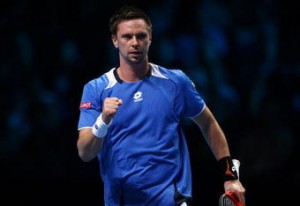
Robin Soderling still has work to do to become a serious rival for Rafael Nadal.
For Rafael Nadal, the latter half of 2009 brought many disappointments, as tennis’ most physical of players struggled to impose his will on opponents and was all too often having play dictated to him. He won no titles after May and his defeat to Soderling was just one of many in which he was overpowered.
But during the Davis Cup final in Spain in November, the clay seemingly invigorated the current world No. 2, as he battled through a difficult first set with Tomas Berdych, then crushed the Czech in the last two sets. When he showed up for the exhibition in Abu Dhabi, he was a different player.
It was in a way fitting that he’d face Soderling in the final of his first event. The Swede had achieved new milestones during the week, namely beating Roger Federer in the semis for his first win over the Great Swiss in 13 encounters, and was as good a barometer as any for Nadal’s play.
Nadal passed the test, beating the Swede 7-6, 7-5. While in the past the arc of Nadal’s groundstrokes has actually helped Soderling, as they sit up for the big swings the tall Swede takes. This time, however, the tiebreak and Soderling’s final service game indicated that Nadal is now figuring out how to defend against those booming groundstrokes and dictate play more with his own.
Players who have done this successfully, namely Federer and Novak Djokovic, have owned very good records against Soderling.
In post-match interviews, the two shared their warmest appraisals yet heard for another. Soderling said that Nadal had won because he was playing “really well.” Nadal said Soderling’s results in the past year were no fluke, and that he had “unbelievable potential.”
Perhaps he does. But would he prefer to hear flattering words from the man who just beat him, or words tinged with bitterness from an opponent he has just beaten?
This year we may find out whether those concepts are mutually exclusive.
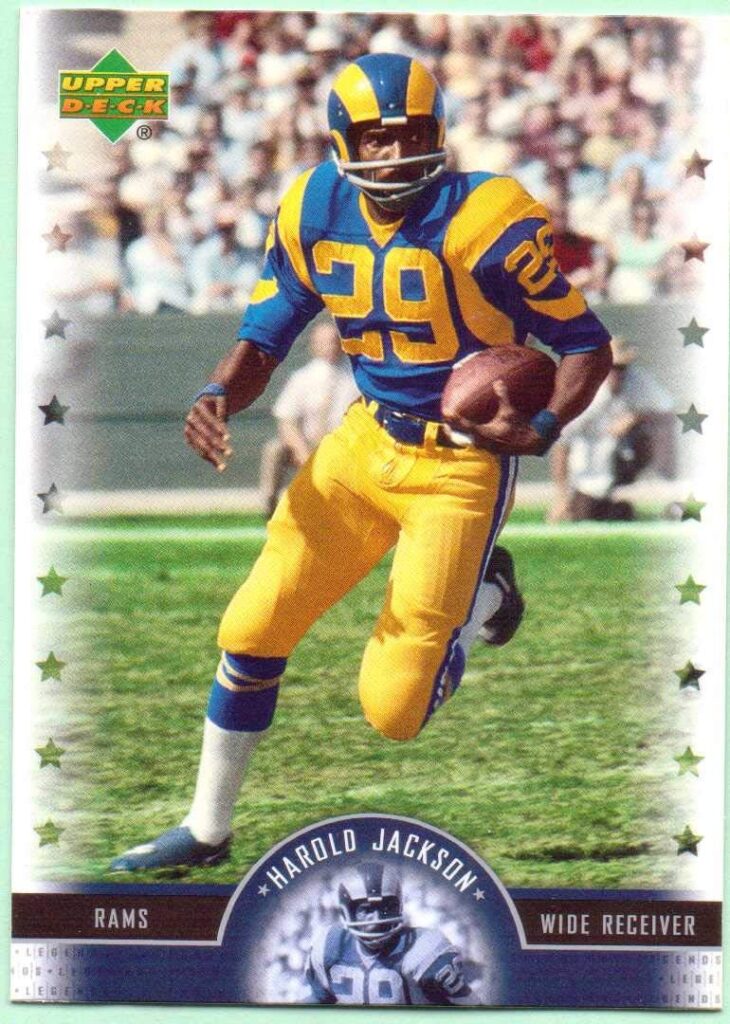

Hello!, I am visiting your site yet again to see more of your updates. I found this very interesting and simply had to comment a huge thank you for all your effort. Please keep up the great work your doing!
This is a great article thanks for sharing this useful information.. I’ll visit your blog frequently for some latest post.
Hey, I’ve been visiting your site for a while now and I always find a gem in your posts. Thanks for sharing. Thank You For This Post, added it to my bookmarks. Thanks again for sharing this up. I unquestionably loved every part of it.
Wonderful website you have here but I was curious about if you
knew of any forums that cover the same topics discussed
in this article? I’d really like to be a part of online community
where I can get feed-back from other experienced people that share the same interest.
If you have any recommendations, please let me know. Cheers!
It’s actually a good in addition to practical item of data. We’re glad for you to distributed this useful facts here. You should continue being united states informed such as this French tutor. Appreciate your sharing.